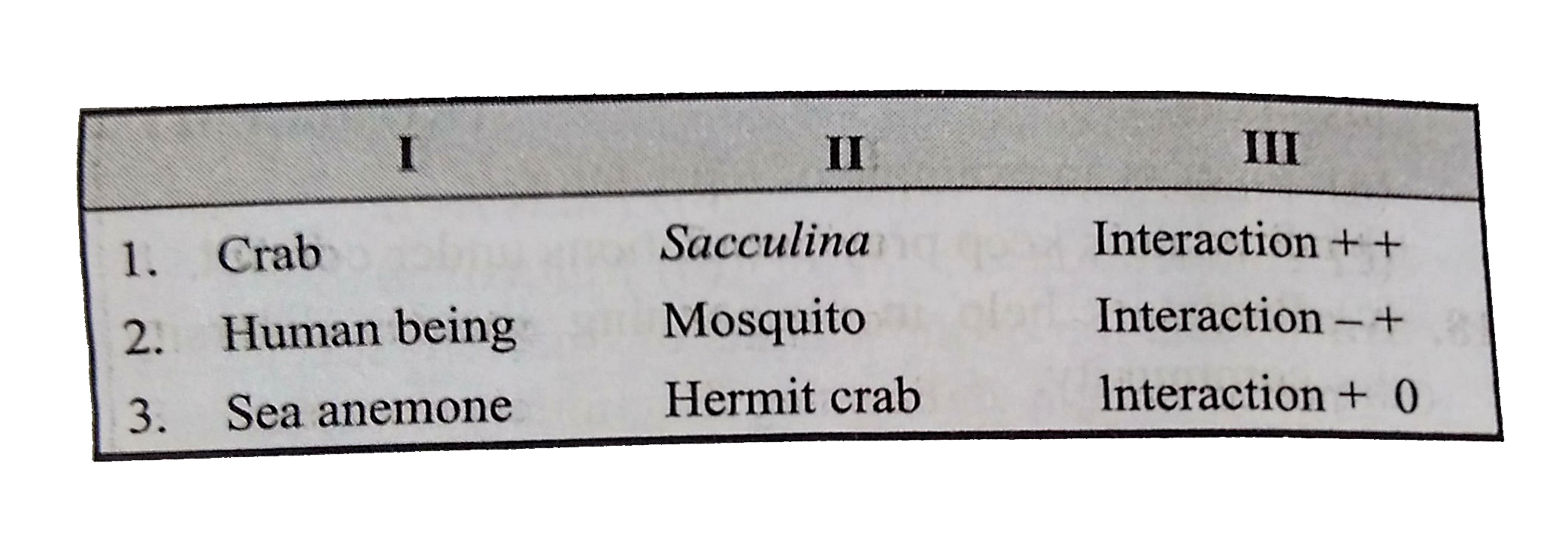The incorrect match is
CnH2n−1 - Alkyne
CnH2n - Alkene
CnH2n+2 - Bicycloalkane
CnH2n−2 - Alkadiene
To solve the question regarding the incorrect match of organic compounds and their formulas, we will analyze the given information step by step.
Step 1: Identify the formulas of different hydrocarbons.
1. Alkynes: The general formula for alkynes is given by CnH2n−2. This means that for every n carbon atoms, there are 2n−2 hydrogen atoms.
- Example: For n=2, the formula becomes C2H2 (which is ethyne or acetylene).
2. Alkenes: The general formula for alkenes is CnH2n. This indicates that for every n carbon atoms, there are 2n hydrogen atoms.
- Example: For n=2, the formula becomes C2H4 (which is ethene or ethylene).
3. Bicycloalkanes: The formula for bicycloalkanes can be represented as CnH2n or CnH2n−2 depending on the structure, but typically it follows the CnH2n for saturated compounds.
- Example: A bicycloalkane with 10 carbons would have a formula of C10H18.
4. Alkadienes: The general formula for alkadienes (which contain two double bonds) is CnH2n−2.
- Example: For 1,3-butadiene, which has 4 carbons, the formula is C4H6.
Step 2: Analyze the matches given in the question.
- Alkyne: CnH2n−2 - Correct match.
- Alkene: CnH2n - Correct match.
- Bicycloalkane: The formula can vary but typically follows CnH2n or CnH2n−2 depending on saturation. The provided example C10H18 is consistent with CnH2n.
- Alkadiene: CnH2n−2 - Correct match.
Step 3: Identify the incorrect match.
From the analysis:
- The formula for alkynes is correctly stated as CnH2n−2.
- The formula for alkenes is correctly stated as CnH2n.
- The formula for bicycloalkanes is correctly matched with C10H18.
- The alkadiene formula is correctly matched as CnH2n−2.
However, if any of the matches were incorrectly stated (for example, if it was mentioned that the formula for alkynes is CnH2n−1), that would be the incorrect match.
Conclusion
The incorrect match is likely related to the alkynes if it was stated as CnH2n−1 instead of CnH2n−2.
- Example: For n=2, the formula becomes C2H2 (which is ethyne or acetylene).
- Example: For n=2, the formula becomes C2H4 (which is ethene or ethylene).
- Example: A bicycloalkane with 10 carbons would have a formula of C10H18.
- Example: For 1,3-butadiene, which has 4 carbons, the formula is C4H6.
- Alkene: CnH2n - Correct match.
- Bicycloalkane: The formula can vary but typically follows CnH2n or CnH2n−2 depending on saturation. The provided example C10H18 is consistent with CnH2n.
- Alkadiene: CnH2n−2 - Correct match.
- The formula for alkynes is correctly stated as CnH2n−2.
- The formula for alkenes is correctly stated as CnH2n.
- The formula for bicycloalkanes is correctly matched with C10H18.
- The alkadiene formula is correctly matched as CnH2n−2.
Topper's Solved these Questions
- ORGANIC CHEMISTRY : SOME BASIC PRINCIPLES AND TECHNIQUES BOOK - AAKASH INSTITUTECHAPTER - ORGANIC CHEMISTRY : SOME BASIC PRINCIPLES AND TECHNIQUES EXERCISE - Assignment(SECTION B)
3 Videos
- ORGANIC CHEMISTRY : SOME BASIC PRINCIPLES AND TECHNIQUES BOOK - AAKASH INSTITUTECHAPTER - ORGANIC CHEMISTRY : SOME BASIC PRINCIPLES AND TECHNIQUES EXERCISE - Assignment(SECTION C)
37 Videos
- ORGANIC CHEMISTRY : SOME BASIC PRINCIPLES AND TECHNIQUES BOOK - AAKASH INSTITUTECHAPTER - ORGANIC CHEMISTRY : SOME BASIC PRINCIPLES AND TECHNIQUES EXERCISE - Exercise
64 Videos
- MOCK_TEST_20BOOK - AAKASH INSTITUTECHAPTER - MOCK_TEST_20EXERCISE - EXAMPLE
28 Videos
- ORGANIC CHEMISTRY: SOME BASIC PRINCIPLE AND TECHNIQUESBOOK - AAKASH INSTITUTECHAPTER - ORGANIC CHEMISTRY: SOME BASIC PRINCIPLE AND TECHNIQUESEXERCISE - TRY YOURSELF
28 Videos
Similar Questions
Knowledge Check
The incorrect match among the following is
AGlochidium - point of an arrowBChiton - coat of mail shellCCryptochiton - spiral shellDDentalium - curved tubular shellThe incorrect match amongst the following is
AAplacophora−ChaetodermaBPolyplacophora−ChitonCCephalopoda−DentaliumDGastropoda−AchatinaThe incorrect match pair is
APredacious fungi - DactylellaBDamping off disease - PythiumCPolyzyme - PucciniaDNeurospora - Drosophila of plant kingdom

